China has expanded a military training mock-up of government buildings in Taipei, including the Presidential Office Building, by almost threefold since 2020, according to satellite images of a training base in Inner Mongolia obtained by think tank Japanese Institute for National Fundamentals, the Sankei Shimbun reported yesterday.
The think tank said it obtained the images yesterday from China’s largest military training ground, the 1,066 square kilometer Zhurihe Training Base in Inner Mongolia, an autonomous region of northern China.
The most recent images show a newly constructed 280km tunnel connecting the mock Presidential Office Building to the mock Judicial Yuan, it said.
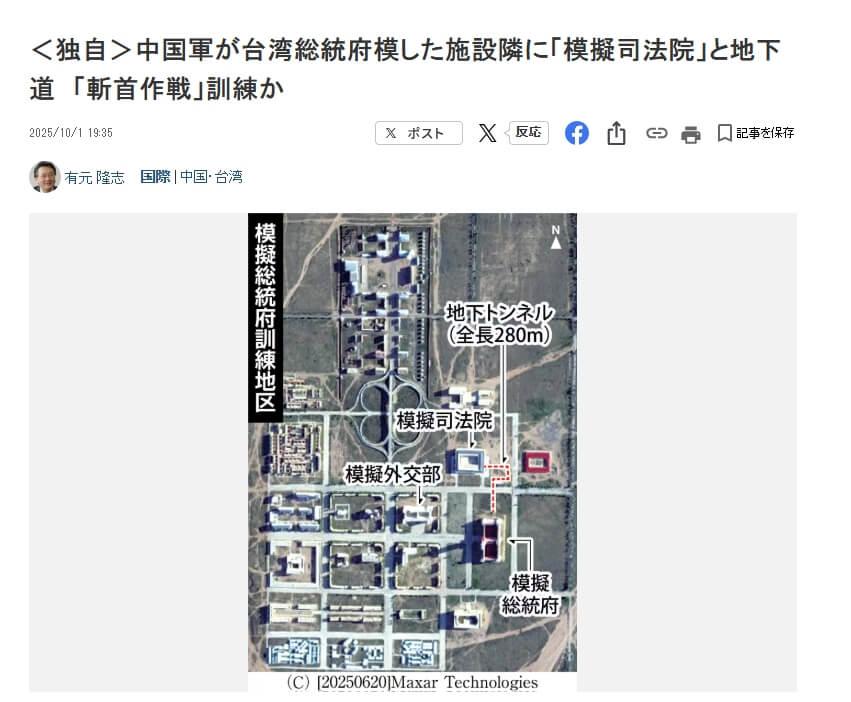
Photo: Screen grab from the Sankei Shimbun via CNA
Beijing’s intention is to pressure Taiwan and send the message that even if Taipei build tunnels, the nation’s leaders cannot run, institute researcher Maki Nakagawa said.
The mock-ups are to prepare for a potential invasion of Taiwan, and are publicized to incite psychological warfare against Taiwan, the report said.
The Chinese People’s Liberation Army (PLA) has been constructing mock buildings of the Presidential Office, the Judicial Yuan and the Ministry of Foreign Affairs for at least a decade, it said.
China Central Television in 2015 broadcast footage of the mock Presidential Office Building during live army exercises.
Construction began on the fake Judicial Yuan building in August 2020 and was completed in 2021, satellite images showed.
Next to the Judicial Yuan is a red-roofed building that images show was first being built in November 2023 and completed in April, intended to replicate the Ministry of Defense’s Reserve Command, which stands opposite the Judicial Yuan in Taipei.
Satellite images from July 2022 showed the PLA practicing exercises such as erecting roadblocks at the crossroads leading to the fake Presidential Office Building and mock Ministry of Foreign Affairs, then clearing them before advancing with armored vehicles.
The following month, the PLA deployed multiple armored vehicles as brigade-sized troop units conducted training simulating combat against forces defending the Presidential Office Building.
Since August, armored vehicles and roadblocks have again been observed on roads around the mock Presidential Office Building, suggesting that training continues, the report said.
After Chinese President Xi Jinping (習近平) became chairman of the Central Military Commission in 2012, he ordered the military to bolster realistic training, it said.
In March 2018, the PLA for the first time held a “training mobilization meeting,” in which Xi, wearing a combat uniform, instructed the PLA to “intensify realistic combat training,” it added.
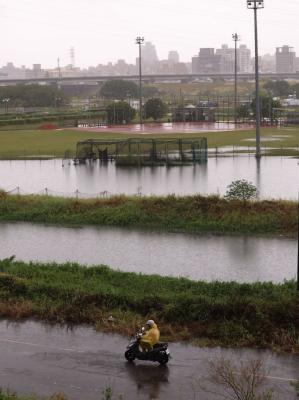
Taipei, New Taipei City, Keelung and Taoyuan would issue a decision at 8pm on whether to cancel work and school tomorrow due to forecasted heavy rain, Keelung Mayor Hsieh Kuo-liang (謝國樑) said today. Hsieh told reporters that absent some pressing reason, the four northern cities would announce the decision jointly at 8pm. Keelung is expected to receive between 300mm and 490mm of rain in the period from 2pm today through 2pm tomorrow, Central Weather Administration data showed. Keelung City Government regulations stipulate that school and work can be canceled if rain totals in mountainous or low-elevation areas are forecast to exceed 350mm in
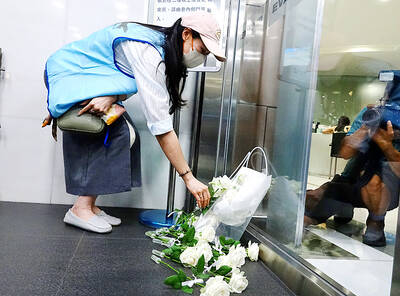
EVA Airways president Sun Chia-ming (孫嘉明) and other senior executives yesterday bowed in apology over the death of a flight attendant, saying the company has begun improving its health-reporting, review and work coordination mechanisms. “We promise to handle this matter with the utmost responsibility to ensure safer and healthier working conditions for all EVA Air employees,” Sun said. The flight attendant, a woman surnamed Sun (孫), died on Friday last week of undisclosed causes shortly after returning from a work assignment in Milan, Italy, the airline said. Chinese-language media reported that the woman fell ill working on a Taipei-to-Milan flight on Sept. 22
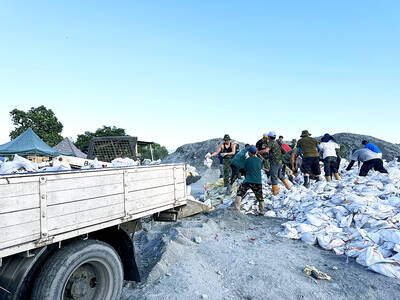
The Central Emergency Operations Center (CEOC) has made a three-phased compulsory evacuation plan for Hualien County’s Mataian River (馬太鞍溪) disaster zone ahead of the potential formation of a typhoon. The plan includes mandatory vertical evacuation using air-raid-style alarms if needed, CEOC chief coordinator Chi Lien-cheng (季連成) told a news conference in the county yesterday. Volunteers would be prohibited from entering the disaster area starting tomorrow, the retired general said. The first phase would be relocating vulnerable residents, including elderly people, disabled people, pregnant women and dialysis patients, in shelters and hospitals, he said. The second phase would be mandatory evacuation of residents living in
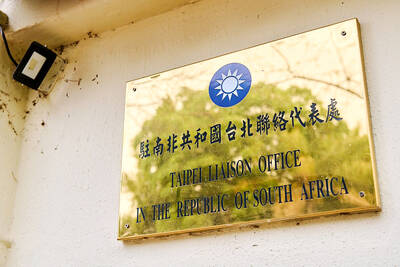
COUNTERMEASURE: Taiwan was to implement controls for 47 tech products bound for South Africa after the latter downgraded and renamed Taipei’s ‘de facto’ offices The Ministry of Foreign Affairs is still reviewing a new agreement proposed by the South African government last month to regulate the status of reciprocal representative offices, Minister of Foreign Affairs Lin Chia-lung (林佳龍) said yesterday. Asked about the latest developments in a year-long controversy over Taiwan’s de facto representative office in South Africa, Lin during a legislative session said that the ministry was consulting with legal experts on the proposed new agreement. While the new proposal offers Taiwan greater flexibility, the ministry does not find it acceptable, Lin said without elaborating. The ministry is still open to resuming retaliatory measures against South